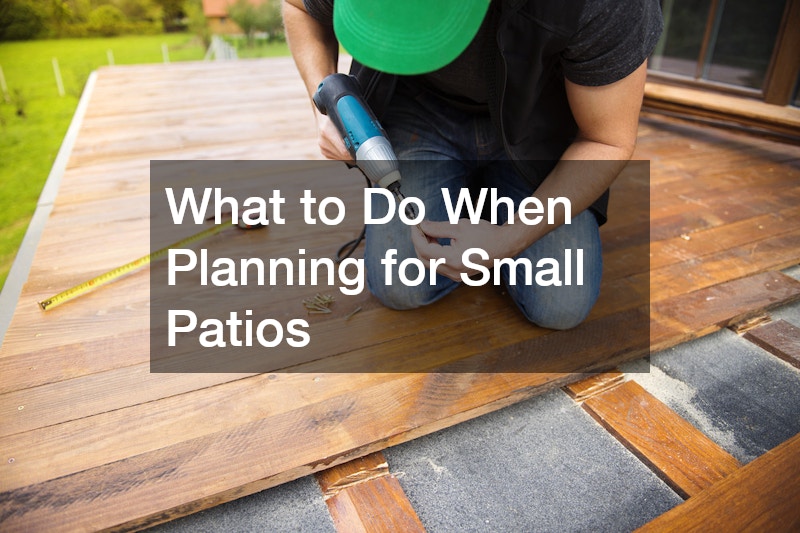Creating small patios can significantly enhance your outdoor living space, providing a cozy area for relaxation and entertaining. Even with limited space, thoughtful planning can lead to a functional and stylish patio that meets your needs.
Here are some essential tips for planning your small patio effectively, ensuring you maximize the potential of your outdoor area.
Before diving into the design, start by assessing the available space. Measure your patio area to determine its dimensions and identify any potential obstacles, such as trees, shrubs, or existing structures. Understanding the layout will help you visualize the best use of the space. Consider the sun’s position at different times of the day to determine how much natural light the patio will receive. This assessment will inform your design decisions, such as the placement of furniture and the selection of plants.
Next, think about the purpose of your small patios. Do you envision it as a quiet retreat for reading, a dining area for meals with family and friends, or a space for hosting gatherings? Defining the primary function of your patio will guide your design choices, helping you select appropriate furniture and decor. If you plan to entertain guests, consider incorporating a small dining table or seating arrangement that encourages conversation. Alternatively, if you seek solitude, a couple of comfortable chairs and a side table may suffice for enjoying morning coffee or evening relaxation.
When it comes to selecting furniture for your small patios, opt for pieces that are appropriately sized for the space. Avoid bulky furniture that can make the area feel cramped. Instead, choose lightweight and versatile options that can be easily rearranged or stored when not in use. Consider multi-functional furniture, such as a storage ottoman or a collapsible table, which can provide additional functionality without taking up too much room. Additionally, look for furniture with clean lines and a streamlined design to create a more open feel.
Incorporating greenery into small patios can significantly enhance their appeal. Choose plants that thrive in containers and can be easily maintained. Vertical gardening is an excellent solution for maximizing limited space, allowing you to grow plants upward rather than outward. Hanging planters or wall-mounted shelves can create a lush backdrop without encroaching on the patio floor. Consider adding herbs, flowers, or even small shrubs to bring color and life to your outdoor area, making it feel more inviting.
To make the most of your small patio, think about the use of vertical space. Installing wall-mounted shelves can provide additional space for plants, decorative items, or outdoor lighting. This approach helps keep the floor area clear and creates a visually appealing environment. Additionally, consider adding a trellis or lattice to support climbing plants, which can add height and dimension to your patio without taking up valuable space.
Lighting is another crucial aspect to consider when planning your small patio. Proper lighting can create a warm and inviting atmosphere, allowing you to enjoy your outdoor space even after the sun goes down. Consider a mix of ambient, task, and accent lighting to achieve the desired effect. String lights, lanterns, and solar-powered garden lights can add a magical touch to your patio. Additionally, installing wall sconces or recessed lighting can illuminate the area without taking up space, enhancing safety and usability.
Lastly, don’t forget about your patio’s flooring. The right flooring can set the tone for your outdoor space and make it feel larger than it is. Options such as decking, patio stones, or decorative tiles can create a cohesive look and enhance the overall design. When selecting materials, consider durability and maintenance, as outdoor flooring should withstand the elements. Light-colored materials can also help create an illusion of space, making your small patio feel more open and airy.
In conclusion, planning for small patios requires thoughtful consideration and creativity. By assessing your available space, defining the purpose of the patio, selecting appropriate furniture, incorporating greenery, utilizing vertical space, and focusing on lighting and flooring, you can create an inviting outdoor area that maximizes functionality and aesthetic appeal. Embrace the potential of your small patio and transform it into a delightful retreat where you can relax, entertain, and enjoy the beauty of your surroundings. With careful planning and execution, even the smallest patios can become cherished extensions of your home.
.





